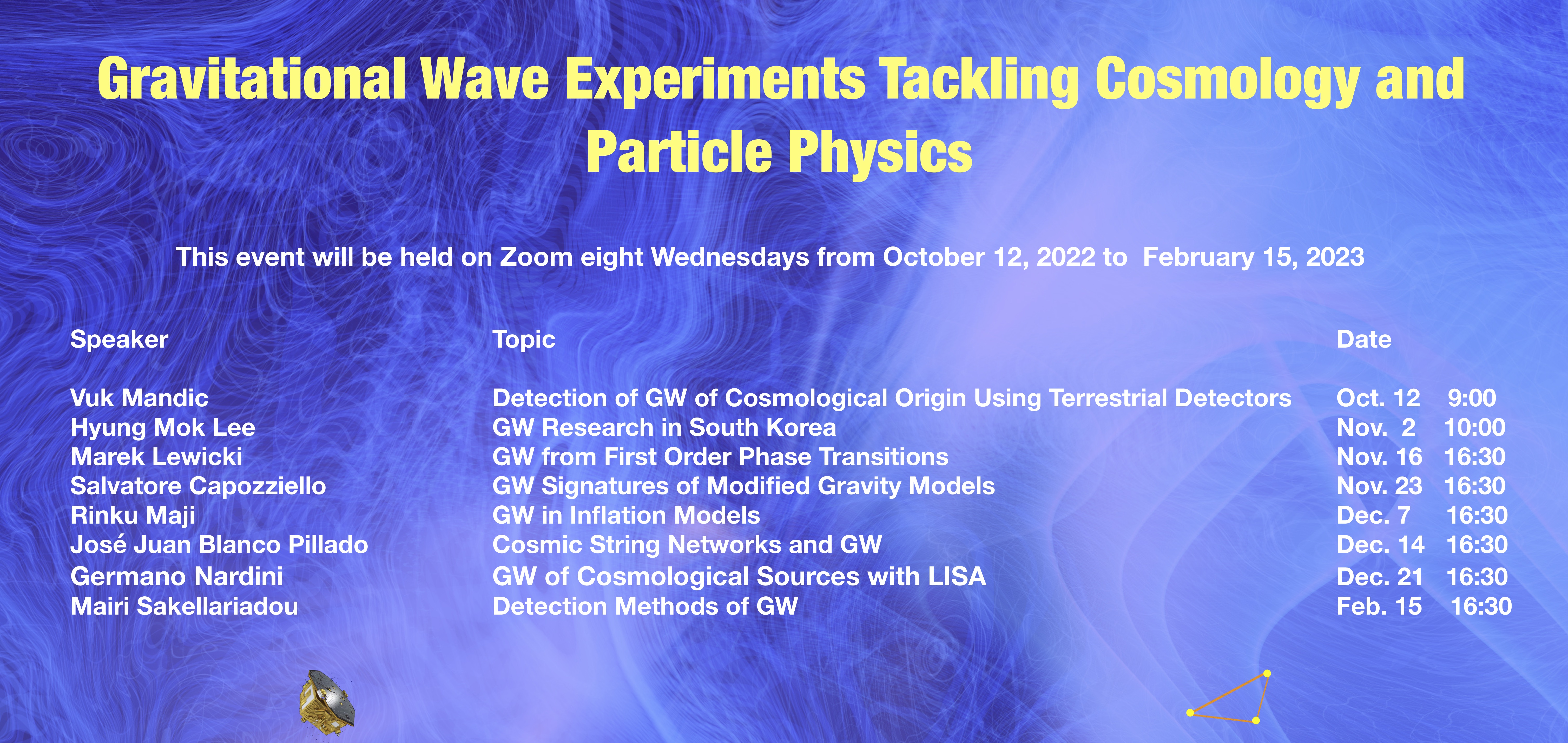Waves at CQUeST: Gravitational Wave Experiments Tackling Cosmology and Particle Physics
Online
Welcome to the CQUeST Special Seminar Series on
"Waves at CQUeST: Gravitational Wave Experiments Tackling Cosmology and Particle Physics",
The CQUeST was initiated in 2005 as an outstanding Science Research Center (SRC) through the fund by the National Research Foundation of Korea for 9 years. In June 2020, CQUeST received additional 9 years’ support as a University Research Center (중점연구소) under the theme: “Gravity, Cosmology and Particle Phenomenology: A Multidisciplinary Approach Towards Quantum Spacetime”.
Venue
The event will be held online using Zoom and open to anyone interested to participate.
Zoom link: https://us06web.zoom.us/j/7750333293?pwd=QXRzTHNIN1hRU1c3NGMvZFA3UklQZz09
Periods, Dates, and Time
The Lectures will be held eight times on Wednesdays starting from October 12 until January 2023.
The time will be either 9:00 a.m., 10:00 a.m., or at 4:30 p.m, depending on the time zone of the speaker
Organizers
Liliana Velasco Sevilla (Chair) Stefano Scopel

